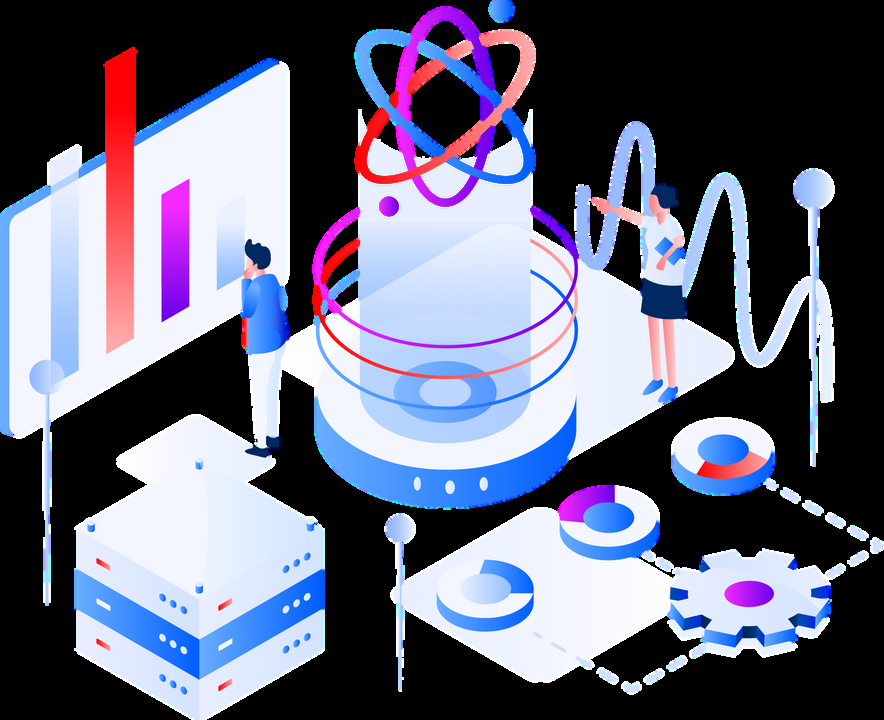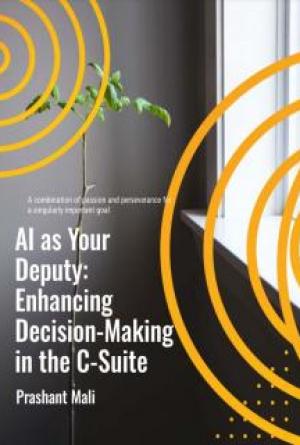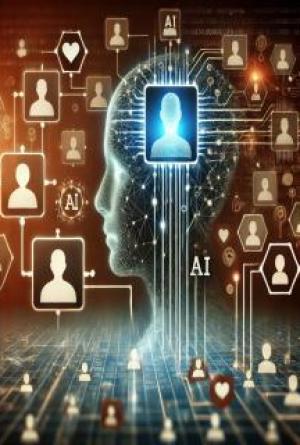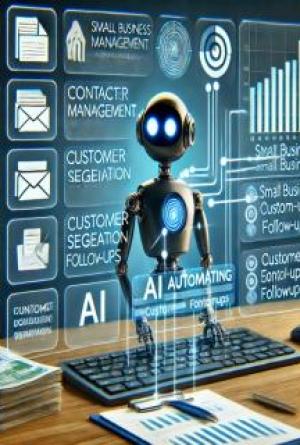

AI IN SOFTWARE
TESTING
Table of Contents
1.Introduction to AI in Software
Testing
2.AI-Powered Test Case
Generation
3.Intelligent Test Execution and
Analysis
4.Automated Bug Detection and
Reporting
5.AI-Based Testing Tools
6.Future Trends and Challenges in
AI for Software Testing
7.Conclusion
8.Sources
INTRODUCTION
In an era defined by rapid technological advancements, the integration of Artificial Intelligence (AI) into various domains has become increasingly prevalent. Among the fields experiencing significant transformation is software testing, where AI is revolutionizing traditional methodologies and approaches. This eBook explores the intersection of AI and software testing, delving into how AI technologies are reshaping testing processes, enhancing efficiency, and improving the overall quality of software products.
Software testing is a critical phase in the software development lifecycle, aimed at identifying defects, errors, and vulnerabilities to ensure that the final product meets quality standards and user expectations. Traditionally, testing has relied on manual effort, involving the creation of test cases, execution of tests, and analysis of results by human testers. However, this approach is often time-consuming, labor-intensive, and prone to human error.
In an era defined by rapid technological advancements, the integration of Artificial Intelligence (AI) into various domains has become increasingly prevalent. Among the fields experiencing significant transformation is software testing, where AI is revolutionizing traditional methodologies and approaches. This eBook explores the intersection of AI and software testing, delving into how AI technologies are reshaping testing processes, enhancing efficiency, and improving the overall quality of software products.
Software testing is a critical phase in the software development lifecycle, aimed at identifying defects, errors, and vulnerabilities to ensure that the final product meets quality standards and user expectations. Traditionally, testing has relied on manual effort, involving the creation of test cases, execution of tests, and analysis of results by human testers. However, this approach is often time-consuming, labor-intensive, and prone to human error.
Join us on this journey as we delve into the realm of AI for software testing, uncovering its capabilities, challenges, and opportunities for innovation.
Chapter 1: Introduction to AI in Software Testing
The Evolution of Software Testing Software testing has undergone a remarkable evolution over the years, driven by advancements in technology and the increasing complexity of software systems.
Traditionally, testing has relied heavily on manual processes, where human testers manually create test cases, execute tests, and analyze results. While this approach has been effective to some extent, it is often time-consuming, resource-intensive, and prone to human error. Moreover, with the rise of agile and DevOps practices, the demand for faster and more efficient testing methods has become paramount.
The Role of AI in Software Testing Artificial Intelligence (AI) holds the promise of revolutionizing software testing by introducing automation, intelligence, and scalability into the testing process. AI encompasses a range of technologies and techniques, including machine learning, natural language processing, computer vision, and predictive analytics, among others. These AI capabilities can be leveraged to automate repetitive testing tasks, uncover insights from test data, and enhance the effectiveness of testing efforts.
Benefits of AI in Software Testing The integration of AI into software testing offers several key benefits:
1. Automation: AI enables the automation of various testing activities, including test case generation, test execution, and result analysis. This automation helps reduce manual effort, accelerate testing cycles, and improve overall efficiency.
2. Intelligence: AI-driven testing tools can intelligently analyze test data, identify patterns, and detect anomalies that may indicate potential defects or performance issues. This intelligence enables testers to focus their efforts on areas that are most likely to contain critical issues.
3. Scalability: AI-powered testing solutions can scale to accommodate the growing complexity and volume of software systems. Whether testing a small application or a large-scale enterprise software platform, AI can adapt to the testing needs and requirements of any project.
4. Predictive Capabilities: AI algorithms can analyze historical test data and predict future outcomes, such as the likelihood of specific defects recurring or the expected performance of the software under different conditions. These predictive capabilities help testers anticipate and mitigate potential risks
Challenges and Considerations While the potential benefits of AI in software testing are substantial, there are also challenges and considerations that organizations must address: 1.Data Quality: AI models rely heavily on the quality and quantity of training data. Ensuring the availability of clean, relevant, and representative data is essential for the success of AI-driven testing initiatives.
2.Algorithm Selection: Choosing the right AI algorithms and techniques for specific testing tasks can be challenging. Organizations must carefully evaluate their testing requirements and the capabilities of available AI tools to make informed decisions.
3.Interpretability: Understanding and interpreting the results generated by AI algorithms can be complex, especially for non-technical stakeholders.
Ensuring transparency and explainability in AI-driven testing processes is crucial for building trust and confidence in the outcomes.
4.Ethical and Regulatory Considerations: The use of AI in software testing raises ethical and regulatory considerations, particularly concerning data privacy,
bias
mitigation,
and
algorithmic
accountability.
In the subsequent chapters, we will delve deeper into specific applications of AI in software testing, exploring AI-powered test case generation, intelligent test execution and analysis, automated bug detection and reporting, AI-based test environment management, as well as future trends and challenges in this rapidly evolving field. Through real-world examples, case studies, and practical insights, we aim to provide a comprehensive understanding of the transformative potential of AI in software testing.
Chapter 2: AI-Powered Test Case Generation
AI-powered test case generation is a cutting-edge approach that leverages machine learning algorithms and genetic programming techniques to automate the creation of test cases. Traditional methods of test case generation often rely on manual effort and heuristics, which can be time-consuming and may not cover all possible scenarios. AI offers a more efficient and effective alternative by analyzing codebases, specifications, and historical test data to automatically generate test cases that maximize coverage and effectiveness.
Machine Learning in Test Case Generation Machine learning techniques, such as supervised learning, unsupervised learning, and reinforcement learning, play a crucial role in AI-powered test case generation. Supervised learning algorithms can be trained on labeled datasets of code and test outcomes to predict which test cases are most likely to uncover defects. Unsupervised learning algorithms can identify patterns and anomalies in codebases and test data, helping generate test cases that target specific areas of concern.
Genetic Programming for Test Case Generation Genetic programming is another powerful technique used in AI-powered test case generation. Inspired by the principles of natural selection and evolution, genetic programming evolves a population of candidate test cases over successive generations, selecting and recombining the fittest individuals to produce offspring with desirable traits. By iteratively refining and evolving test cases based on fitness criteria such as code coverage, fault detection, and execution time, genetic programming can generate high-quality test suites that effectively stress software systems and uncover hidden defects.
Benefits of AI-Powered Test Case Generation AI-powered test case generation offers several advantages over traditional methods: 1. Increased Coverage: By analyzing codebases and specifications, AI can identify edge cases and boundary conditions that human testers may overlook, resulting in more comprehensive test coverage.
1.Efficiency: AI-powered test case generation automates the time-consuming task of manually creating test cases, freeing up testers to focus on higher-level testing activities such as exploratory testing and risk analysis.
1.Effectiveness: By leveraging machine learning algorithms and genetic programming techniques, AI can generate test cases that are specifically tailored to the software under test, maximizing the likelihood of uncovering defects and vulnerabilities.
1.Adaptability: AI-powered test case generation algorithms can adapt to changes in the software under test, automatically adjusting test case generation
strategies
based
on
evolving
requirements, code changes, and feedback from previous test runs.
Case Studies and Examples
Several organizations have successfully implemented AI-powered test case generation techniques in their testing processes, achieving significant improvements in efficiency, coverage, and defect detection rates.
For example, a leading software company used machine learning algorithms to analyze historical test data and automatically generate regression test suites, reducing test cycle times by 30% and improving defect detection rates by 20%. Similarly, a fintech startup employed genetic programming techniques to evolve test cases for their financial software, resulting in a 50% increase in code coverage and a 25% reduction in post-release defects.
Challenges and Considerations
While AI-powered test case generation offers promising benefits, there are challenges and considerations that organizations must address: 1. Overfitting: Machine learning algorithms may be susceptible to overfitting, where they learn to reproduce specific patterns in training data but fail to generalize to new, unseen data. Organizations must carefully select and validate machine learning models to avoid overfitting issues in test case generation.
1. Complexity: AI-powered test case generation techniques can be complex to implement and require expertise in machine learning, software engineering, and testing.
1. Resource Requirements: Training machine learning models and running genetic programming algorithms can be computationally intensive and require significant computational resources.
Organizations must ensure they have access to adequate
hardware
infrastructure
and
computational resources to support AI-powered test case generation initiatives.
2.
Chapter 3: Intelligent Test Execution and Analysis
Intelligent test execution and analysis represent a paradigm shift in software testing, enabled by the integration of Artificial Intelligence (AI) techniques such as machine learning, natural language processing, and predictive analytics. Unlike traditional testing approaches, which rely primarily on manual test execution and analysis, intelligent testing leverages AI algorithms to automate testing tasks, extract insights from test data, and optimize testing processes.
Automated Test Prioritization and Selection One of the key aspects of intelligent test execution is automated test prioritization and selection. Instead of executing all test cases indiscriminately, AI algorithms analyze factors such as code changes, defect history, and business impact to prioritize tests that are most likely to uncover critical defects or regressions. By intelligently selecting test cases for execution, organizations can optimize testing efforts, reduce testing time, and maximize the effectiveness of their testing processes.
Predictive Analytics for Test Outcome Prediction Predictive analytics plays a vital role in intelligent test execution by forecasting test outcomes based on historical test data and project metrics. Machine learning models trained on past test results can predict the likelihood of test cases passing or failing under different conditions, enabling testers to focus their efforts on areas of the software that are most susceptible to defects. Predictive analytics also facilitates risk-based testing approaches, where tests are prioritized based on their potential impact on the software's functionality and stability.
Anomaly Detection and Root Cause Analysis Another important aspect of intelligent test execution is anomaly detection and root cause analysis. AI algorithms can analyze test results in real-time, identifying deviations from expected behavior and pinpointing the root causes of failures or defects. By automating the detection and diagnosis of anomalies, organizations can expedite the troubleshooting process, accelerate defect resolution, and improve the overall reliability of their software systems.
Continuous Feedback Loop and Adaptive Testing Strategies
Intelligent test execution fosters a continuous feedback loop between testing and development teams, facilitating rapid iteration and improvement of software quality. AI algorithms analyze feedback from test results, user feedback, and production data to adapt testing strategies dynamically. This adaptive approach enables organizations to respond quickly to changing requirements, mitigate risks, and deliver high-quality software products that meet user expectations.
Future Directions
Despite the challenges, the future of intelligent test execution and analysis holds great promise for advancing the state of software testing. Emerging technologies such as deep learning, reinforcement learning, and automated reasoning are poised to further enhance the capabilities of intelligent testing tools and techniques. Additionally, the integration of AI with other emerging trends such as DevOps, continuous integration/continuous delivery (CI/CD), and shift-left testing will enable organizations to achieve greater agility, efficiency, and quality in their software development and delivery processes.
As organizations continue to embrace AI-powered testing, collaboration between academia, industry, and
regulatory bodies will be essential for driving innovation, sharing best practices, and addressing ethical and regulatory challenges. By harnessing the collective expertise and resources of the global testing community, we can unlock the full potential of AI in software testing and pave the way for a future where high-quality software is the norm rather than the exception.
In the subsequent chapters, we will delve into other aspects of AI in software testing, including automated bug detection and reporting, AI-based test environment management, as well as future trends and challenges in this dynamic field.
Chapter 4: Automated Bug Detection and Reporting
Automated bug detection and reporting represent a critical aspect of modern software testing, leveraging Artificial Intelligence (AI) and machine learning techniques to identify, classify, and prioritize defects in software systems. Traditional bug detection methods often rely on manual inspection and testing, which can be time-consuming, error-prone, and inefficient, especially for large-scale projects with complex codebases. Automated bug detection and reporting aim to streamline this process by leveraging AI algorithms to analyze code, test results, user feedback, and other relevant data sources to detect and report bugs automatically.
AI Techniques for Bug Detection
AI techniques such as machine learning, natural language processing (NLP), and pattern recognition play a pivotal role in automated bug detection.
Machine learning models can be trained on historical bug data to identify common patterns, anomalies, and indicators of potential defects in code. Natural language processing algorithms can analyze bug reports, developer comments, and documentation to
extract relevant information and context about reported issues. Pattern recognition algorithms can detect subtle deviations from expected behavior in software systems, flagging potential bugs for further investigation.
Automated Root Cause Analysis
In addition to bug detection, AI-powered tools can perform automated root cause analysis to identify the underlying causes of defects. By analyzing code changes, version control history, and system logs, AI algorithms can pinpoint the precise changes or conditions that led to the manifestation of a bug. This information is invaluable for developers and testers, enabling them to understand the context and implications of reported issues and devise effective strategies for resolution.
Benefits of Automated Bug Detection and Reporting The adoption of automated bug detection and reporting offers several key benefits: 1. Early Defect Detection: By leveraging AI algorithms to analyze code changes and test results continuously, organizations can detect defects early in the development lifecycle, reducing the cost and effort required for bug resolution.
1. Improved Accuracy: AI-powered bug detection tools can analyze large volumes of code and test data with high accuracy, minimizing false positives and false negatives and ensuring that reported issues are genuine defects.
1. Efficient Bug Resolution: Automated root cause analysis helps developers and testers identify the underlying causes of defects quickly, enabling them to implement targeted fixes and prevent similar issues from recurring in the future.
1. Enhanced Collaboration: Automated bug triage and prioritization mechanisms facilitate collaboration between development, testing, and product management teams, ensuring that critical issues are addressed promptly and effectively.
As organizations continue to embrace AI-powered testing tools, collaboration between academia, industry, and regulatory bodies will be essential for driving innovation, sharing best practices, and addressing ethical and regulatory challenges. By harnessing the collective expertise and resources of the global testing community, we can unlock the full potential of AI in software testing and ensure the delivery of high-quality software products that meet user expectations and industry standards.
Chapter 5: AI-Powered Testing Tools In the realm of AI-powered testing, a plethora of tools and platforms have emerged to aid organizations in leveraging artificial intelligence for software quality assurance. These tools encompass various aspects of testing, from test case generation to bug detection and test environment management. Let's explore some notable AI-powered testing tools and their functionalities:
Open-Source Tools:
1.Appium: Appium is an open-source test automation framework for mobile applications. It allows testers to write automated tests using familiar programming languages and supports multiple platforms, including iOS and Android. Appium's extensibility and community support make it a popular choice for mobile test automation.
1.Selenium: Selenium is another widely-used open-source test automation framework, primarily for web applications. It provides a suite of tools for automating web browsers across different platforms and supports multiple programming languages, including Java, Python, and JavaScript.
Selenium's versatility and large user community make it a staple in web application testing.
1.JUnit: JUnit is an open-source unit testing framework for Java applications. It provides annotations and assertions for writing and executing unit tests, allowing developers to validate individual components of their code.
JUnit's simplicity and integration with popular Java development tools make it a preferred choice for Java developers.
Paid Tools:
1.Applitools: Applitools offers AI-powered visual testing solutions for web and mobile applications.
Its Visual AI technology automatically detects visual bugs and UI inconsistencies, allowing testers to validate application interfaces across different browsers, devices, and screen sizes. Applitools'
intuitive dashboard and advanced analytics provide actionable insights into application quality
.
1.mabl: mabl is a paid test automation platform that leverages AI to create and maintain automated tests for web applications. It uses machine learning algorithms to understand application workflows and automatically generate test scripts that adapt to changes in the application's UI. mabl's self-healing tests and intelligent insights help testers identify and prioritize critical issues efficiently.
1. Test.ai: Test.ai offers AI-driven testing solutions for mobile applications, focusing on test automation and exploratory testing. Its AI-powered test generation engine analyzes application interfaces and user interactions to generate comprehensive test scenarios automatically. Test.ai's intuitive interface and actionable recommendations enable testers to uncover critical defects quickly.
1. BrowserStack: BrowserStack is a cloud-based testing platform that offers automated and manual testing capabilities for web and mobile applications. It provides access to a vast array of real devices and browsers, allowing testers to perform cross-browser and cross-device testing seamlessly. BrowserStack's AI-driven testing features include automated screenshot comparison and visual regression testing.
1. TestGrid: TestGrid is an AI-powered test
automation platform that specializes in end-to-end testing of web and mobile applications. It uses machine learning algorithms to analyze application behavior and generate automated test scripts that cover various use cases and scenarios. TestGrid's intuitive test management dashboard and advanced reporting features help testers optimize testing efforts and achieve better test coverage.
Hybrid Solutions: 1.Eggplant: Eggplant provides a hybrid testing platform that combines AI-driven test automation with manual testing capabilities. Its AI algorithms simulate user interactions with applications, generating automated test scripts that cover various use cases and scenarios. Eggplant's integration with manual testing tools allows testers to seamlessly transition between automated and manual testing modes.
1.Tricentis Tosca: Tricentis Tosca is a comprehensive test automation platform that incorporates AI-driven testing capabilities. Its Model-Based Test Automation approach uses AI algorithms to optimize test case design and execution, reducing manual effort and accelerating testing cycles.
Tricentis Tosca's integrated analytics and reporting tools provide actionable insights into application quality and performance.
By offering a diverse range of tools and solutions, from open-source frameworks to sophisticated paid platforms, the AI-powered testing ecosystem caters to the diverse needs and preferences of testers and QA teams.
Chapter 6: Future Trends and Challenges in AI for Software Testing Emerging Trends in AI for Software Testing 1.Explainable AI: As AI becomes more prevalent in software testing, there's a growing need for explainable AI models. Testers and stakeholders require transparency into how AI algorithms make decisions to build trust and confidence in AI-driven testing processes. Explainable AI techniques aim to provide insights into the inner workings of AI models, allowing testers to understand the rationale behind test outcomes and identify potential biases or errors.
1. AI-Augmented Testing: AI is increasingly being used to augment traditional testing methodologies, rather than replace them entirely. AI-powered tools assist testers in tasks such as test case generation, execution, analysis, and reporting, enhancing their productivity and effectiveness. This trend towards AI-augmented testing enables organizations to leverage the strengths of both human testers and AI algorithms, resulting in more comprehensive and efficient testing processes.
1.Shift-Left Testing with AI: Shift-left testing, which involves testing earlier in the software development lifecycle, is gaining traction as organizations seek to detect and address defects earlier, when they are less costly to fix. AI technologies support shift-left testing initiatives by enabling early defect detection, automated test case generation, and continuous feedback loops between testing and development teams. By integrating AI into shift-left testing practices, organizations can improve software quality, reduce time-to-market, and enhance overall development efficiency.
Key Challenges in AI for Software Testing 1. Data Quality and Quantity: AI algorithms rely on large volumes of high-quality training data to achieve accurate and reliable results. However, obtaining sufficient and representative training data for AI models can be challenging, particularly in the context of software testing where labeled data may be scarce or costly to acquire.
Organizations must address data quality and quantity issues to ensure the effectiveness of AI-driven testing initiatives.
1. Algorithmic Bias and Fairness: AI algorithms may exhibit biases in their decision-making processes, leading to disparities in outcomes or treatment across different groups or demographics. In software testing, algorithmic bias can manifest in various ways, such as biased test case generation or skewed bug detection results. Organizations must mitigate algorithmic biases through careful algorithm selection, data preprocessing, and ongoing monitoring and evaluation of AI models
.
1. Interpretability and Explainability: Understanding and interpreting the decisions made by AI algorithms can be challenging, particularly for non-technical stakeholders. Testers and project managers require clear explanations of how AI models arrive at their conclusions to make informed decisions about testing strategies and priorities. Improving the interpretability and explainability of AI-driven testing processes is essential for building trust and confidence in AI among stakeholders
The future of AI in software testing is filled with exciting possibilities and challenges. As AI technologies continue to evolve and mature, organizations must stay abreast of emerging trends, address key challenges, and embrace ethical and responsible AI usage to unlock the full potential of AI in transforming software testing processes.
In conclusion, the integration of Artificial Intelligence (AI) into software testing represents a significant paradigm shift, offering tremendous opportunities to improve the efficiency, effectiveness, and reliability of testing processes. Throughout this book, we have explored various aspects of AI in software testing, including AI-powered test case generation, intelligent test execution and analysis, automated bug detection and
reporting,
AI-based
test
environment
management, as well as future trends and challenges in this dynamic field.
AI-driven testing techniques leverage machine learning, natural language processing, pattern recognition, and other AI technologies to automate repetitive tasks, uncover insights from test data, and optimize testing strategies. By harnessing the power of AI, organizations can accelerate testing cycles, enhance test coverage, and deliver high-quality software products that meet user expectations and industry standards.
However, the adoption of AI in software testing is not without its challenges. Organizations must address issues such as data quality and quantity, algorithmic bias, interpretability, and ethical considerations to ensure the responsible and effective use of AI in testing processes
Additionally, as AI technologies continue to evolve, organizations must stay abreast of emerging trends and advancements to capitalize on the full potential of AI in transforming software testing practices.
In the ever-evolving landscape of software development and testing, AI will play an increasingly prominent role, enabling organizations to achieve greater agility, efficiency, and innovation in delivering software products to market. By embracing AI-powered
testing
tools
and
methodologies,
organizations can stay ahead of the curve, drive continuous improvement, and deliver software products that meet the demands of today's rapidly evolving digital landscape.
As we look towards the future, the possibilities for AI in software testing are limitless. By fostering collaboration, innovation, and responsible AI usage, we can unlock the full potential of AI to revolutionize software testing and pave the way for a future where high-quality software is the norm rather than the exception.
sources
1. https://www.researchgate.net/publication/374263724_Artificial_Intelligen
ce_in_Software_Testing_A_Systematic_Review
2. https://www.mdpi.com/2079-9292/12/9/2109
3.https://www.researchgate.net/publication/341473957_Artificial_Intelligen ce_in_Software_Test_Automation_A_Systematic_Literature_Review IEEE Xplore (https://ieeexplore.ieee.org/Xplore/home.jsp) ACM Digital Library (https://dblp.org/)
ScienceDirect (https://www.sciencedirect.com/)









